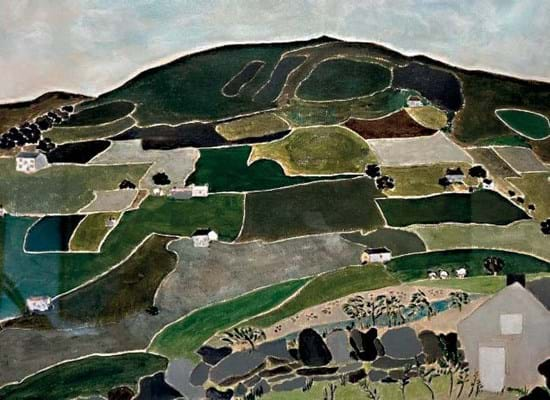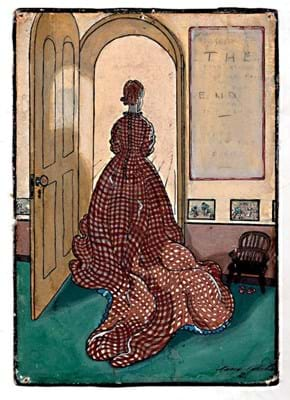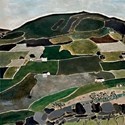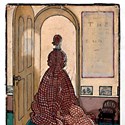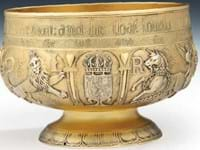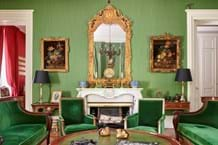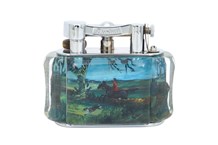
Mabel Pryde Nicholson, The Artist’s Daughter, Nancy, as a Harlequin, 1910, oil on canvas. It is among the works featured at an exhibition at Crane Kalman.
Image copyright: The Fleming Collection
Winifred Nicholson (1893-1981) may be a well-known artist already, but an exhibition next month sets out to prove that she was only one in a family populated by talented female artists.
The Nicholson Women, running at Crane Kalman in Knightsbridge, London, from May 2-June 29 showcases works both by her and by eight other women of the dynasty.
Such multigenerational creative lines are often encountered in art history: think of the Brueghels, the Pissarros and the Gentileschis. Still, shows that put the spotlight purely on the women is unusual. In this case it is described by the gallery as part of the ongoing effort to redress the gender imbalance in public and private collections.

Winifred Nicholson, A Nursery Bunch (c.1927). It is among the works featured at an exhibition at Crane Kalman.
The idea cuts out William Nicholson (1872-1949), except for a portrait by his second wife, and his son Ben (1894-1982), husband of Winifred and probably the best-known artist of any of those named here.
Winifred and Ben married in 1920. Her work was mainly concerned with domestic themes and her Colourist style informed by her own brand of Impressionism. Ben was one of the major proponents and practitioners of abstraction, and, as his first marriage fell apart, he started a relationship with another of the giants of Modern British art, Barbara Hepworth.
Generation gain
However, at Crane Kalman the story starts a generation before Winifred.
The earliest artist featured is Mabel Pryde Nicholson (1871-1918), first wife of William Nicholson and younger sister of the artist James Ferrier Pryde. Her pictures mainly use her children - including Ben - as models, making liberal use of the family dressing-up box. She exhibited regularly at the Goupil Gallery and was given a retrospective there after her death.
The family vogue for dressing up can be seen in the picture The Artist’s Daughter, Nancy as Harlequin (1910).
The work of Nancy (1899-1977), is also in the show. Along with her creations in art and textile design she founded Poulk Press in 1930 and worked in letterpress printing. Her style, seen in works such as Auntie’s Skirt, The End (1918), is reminiscent of her father William’s well-known woodcuts. She had married the poet and author Robert Graves and had four children with him, but after their marriage was dissolved her output dropped as her responsibilities as a single mother increased.
EQ Nicholson (1908-92), Mabel’s daughter-in-law, produced textile designs, working on Batik for Marion Dorn. The works of Edith Nicholson (1890-1958), William’s second wife following Mabel’s untimely death from pneumonia, are also on show.
Kate Nicholson (1929-2019), daughter of Winifred and Ben, was a member of the Penwith Society of Artists, the more abstract branch of the St Ives set. She often painted alongside her mother and the two travelled together making frequent trips to Greece, north Africa and the Hebrides.
Several living artists are represented in the show.
Rachel Nicholson (b.1934) is the daughter of Ben and Hepworth. Rachel lived and worked in Cornwall and has completed landscapes spanning the UK.
Rafaele Appleby, great granddaughter of Mabel Pryde Nicholson, has a studio on Hadrian’s Wall and uses pastel as well as paint for her pictures of nature. Similarly influenced by the Cumbrian landscape is Ophelia Appleby, who is a musician as well as an artist.
Prices in the show range from around £5000-70,000.


